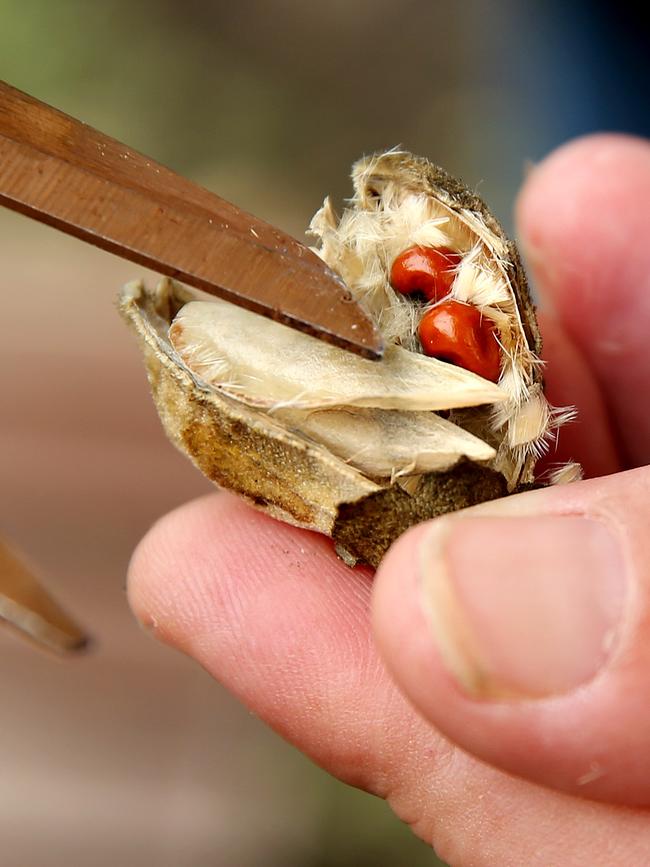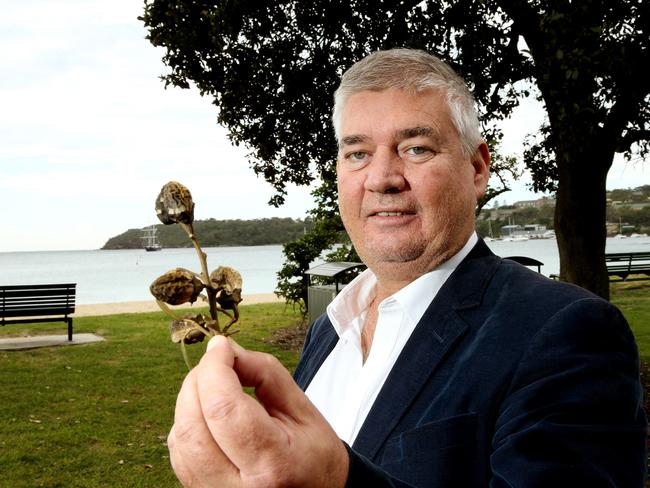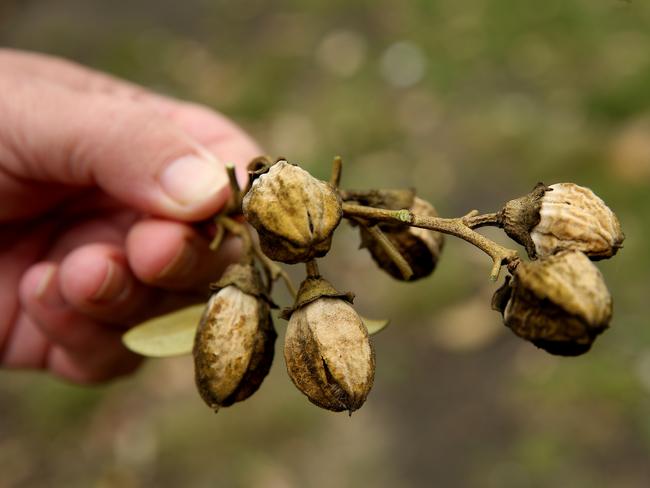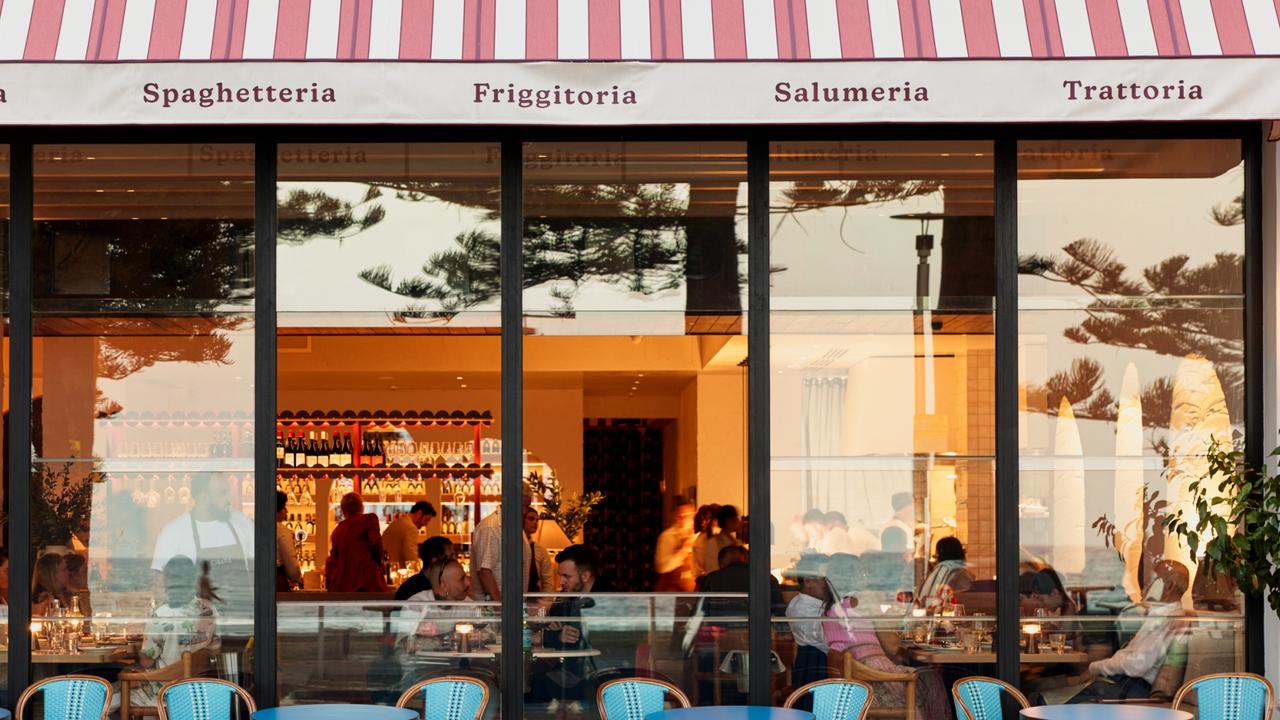Mosman deputy mayor Roy Bendall compares fibres from Norfolk Island hibiscus tree to asbestos
MOSMAN councillor Roy Bendall has warned of harmful fibres released by the Norfolk Island hibiscus tree and hopes the council will declare the species a local weed.

Mosman
Don't miss out on the headlines from Mosman. Followed categories will be added to My News.
THE Mosman deputy mayor has compared the fibres released by a poisonous tree to asbestos.
Lagunaria patersonii, known as the Norfolk Island hibiscus or Cow Itch tree, has long irritated residents and visitors alike, according to councillor Roy Bendall.
Cr Bendall, who lives near one of the trees at Balmoral, complained about the vexatious species during a Mosman Council meeting on Tuesday last week.
“The buds of this tree are poisonous. They seed twice a year and they come out with this fibreglassy stuff,” he said.
“Now, in some of the local government areas in Western Australia they are actually wholesale pulling them out.
“We have had residents complain that it causes breathing problems. Children have allergic reactions to them, especially down at Balmoral.”
According to an American gardening information website, Dave’s Garden, the tree’s seeds are poisonous if eaten and touching the plant might cause an allergic reaction or skin irritation.


Cr Bendall said the tree caused “a lot of screaming kids” at Balmoral when they stepped on the spiky seed pods while barefoot.
“About 30 years ago we were planting them all over the place because they are very elegant trees,” he said.
“But it has come to light that they cause a respiratory type of [condition] — it’s almost like an asbestosis because these things get into your lungs.”
Cr Bendall said the council had already removed one of the trees from Raglan St after a resident complained.
“But they are littered all around the suburb,” he said.
“They’re actually unbelievable. I mean, they look pretty but they’re just poisonous and they’ve got fibreglass little spurs in them.
“They do attract those little jewel beetles though, that’s the one thing that we’ll miss.”

Cr Bendall raised the tree issue during debate about the council’s proposed changes to its Street Tree Master Plan.
The council will consider listing the species as “undesirable” in the council’s next review of its Local Weed Plan.
Residents do not need the council’s permission to remove a weed which is classified under the Noxious Weed Act from their private property.
The council’s environment and open space manager, Steve Smith, said the council had already removed some of the species from the beachfront and streets after complaints from beach users and residents.
Mr Smith said the Norfolk Island hibiscus was not in the current 2005 Street Tree Master Plan or the proposed 2017 plan and was no longer planted.
“The council has replaced them with more suitable species,” he said.
“The trees do not self-propagate readily, but when seed pods shed they cause irritation and discomfort to users in the immediate area.
“They provide significant shade and amenity and some trees have been in place for a long time.
“Trees are assessed for removal according to council policies and the amenity they provide and each removal will be subject to community consultation.”

Councillors also supported Cr Bendall’s idea to increase the annual funding for its street tree planting program from $30,000 to $50,000.
Cr Bendall said the increase was necessary to “repair the devastation and restore the environmental capacity” of Mosman caused several years ago by the State Government’s original 10/50 bushfire vegetation clearing laws.
“The misguided 10-50 laws resulted in us losing our canopy,” he said.
“The laws gave people the ability to cut down trees within a 300-metre radius of a fire zone and all the fire zones in Mosman were the parks!
“So people just started cutting down trees on their land and on public land, council land.
“The community lost 200 canopy trees and primarily it was all done for the views.
“So although it was a good idea in the Blue Mountains, in bushfire zones, it was not good in the inner city because it meant that people cut down their trees.
“The Government eventually amended the law, but it took us a year to lobby the Government to change it.
“The community is still in the process of recovering from that.”

Mr Steve urged residents to view the council’s proposed changes to its Street Tree Master Plan.
“The council is sustaining and enhancing Mosman’s local environment for future generations,” he said.
“The plan also assures residents that their existing view lines from both private and public land will not be impacted or can be easily maintained under the council’s current management and policy frameworks.”
The 42-day consultation for the proposed changes starts about April 20.


